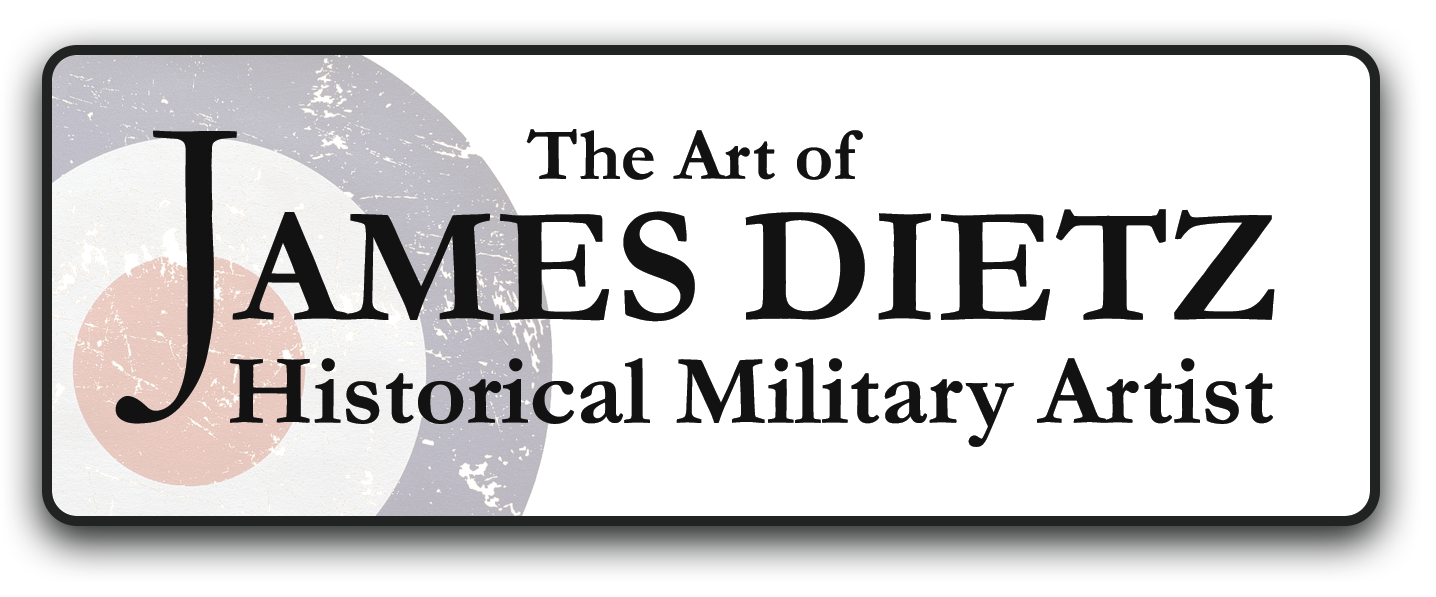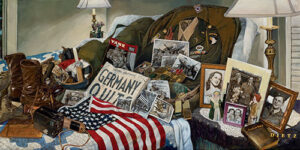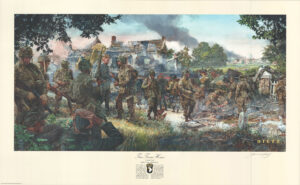Description
1000 Veterans Edition
250 Publisher Proof Edition
100 Artist Proof Edition
Image Size is 25.5″ x 15″
Overall Size is 32″ x 22.5″
The 506th P.I.R.,101st Airborne at Brecourt Manor
In the mid-morning hours of D-Day, June 6, 1944, the deafening sounds of gunfire resounded across the French hills, along the Channel coast and against low-hanging clouds. Amidst the fields of the French farm, Brécourt Manor, a particular cacophony erupted as a German battery of four 105mm cannons shook the soil. Five miles distant, on Utah Beach, the Brécourt battery’s steel rained upon American soldiers of the 4th Infantry Division as they disembarked from their landing craft. Within minutes of that first salvo, an ad hoc squad of paratroopers from Easy Company, 2nd Battalion, 506th P.I.R., 101st Airborne, departed the French village of Le Grand-Chemin with a mission to silence those guns.
With each shot, the Brécourt cannons belied their locations. Three of the guns had been dug into the field’s hedgerows, facing northeast toward the beaches. A fourth gun lay to the west and aimed westward to guard the battery’s flank. A manmade ditch connected each position. In addition to the gun crews, 50 elite German paratroopers from the 6th Parachute Regiment defended the field’s expanse. Against this opposition, Easy Company’s ranking officer, 1st Lt. Richard Winters, led 12 paratroopers. Normally 120 men strong, Easy Company had been scattered about Normandy that morning during the 1:30 a.m. paradrop.
At approximately 8:30 a.m., Winters deployed his men for a “double envelopment” assault on the westernmost cannon. On cue, Lt. Buck Compton, Platoon Sgt. Bill Guarnere, and Pvt. Don Malarkey attacked from the gun’s front-right. Winters, Cpl. Joe Toye, Cpl. Robert Wynn, and Pvt. Gerald Lorraine, a jeep driver from battalion HQ, simultaneously attacked the first gun from its front-left. While the assault teams created a pincer, the .30-caliber machine gun crews of Pvts. John Plesha, Walter Hendrix, Cleveland Petty, and Joe Liebgott kept the Germans pinned down with fire from head-on. From the cannon’s left flank, Platoon Sgt. Carwood Lipton and Sgt. Mike Ranney provided covering fire; Lipton even climbed a tree for a better field of view. Years later, Lipton remembered the attack’s result: “…the Germans apparently felt that they were being hit by a large force. Those defending the first gun broke and withdrew in disorganization to a far tree line and that gun was in our hands.”
Having sacked the first cannon, Winters “reorganized the team.” James Dietz’s painting Silencing the Guns signifies this moment. While Winters confers with Guarnere, troopers Malarkey, Compton, Wynn, and Toye deploy to deliver suppressing fire to keep the Germans on their heels. Figures representing Lipton and Ranney emerge from a background hedgerow to rejoin their comrades. Soon, Guarnere will lead a charge to capture the second gun.
By the engagement’s end, Easy Company, with a few reinforcements, had captured and destroyed three of the Brécourt cannons. Five Dog Company troopers, led by Lt. Ronald Spiers, arrived after the third gun had been taken; they then captured and destroyed the fourth gun. For valor displayed at Brécourt, the 506th P.I.R. decorated the battle’s participants. Compton, Guarnere, Lorraine, and Toye received the Silver Star. Hendrix, Liebgott, Lipton, Malarkey, Petty, Plesha, Ranney, and Wynn received the Bronze Star. Colonel Robert Sink, the commander of the 506th P.I.R., nominated Winters for the Medal of Honor. However, according to the late Stephen Ambrose, the author of Band of Brothers, “…because Maj. Gen. Maxwell Taylor, commander of the 101st Airborne Division had placed an arbitrary limit of one MOH for the division in Normandy, and because Lt. Col. Robert Cole was the man picked to receive the award, Winters was downgraded to the Distinguished Service Cross…”
During the days following the D-Day invasion, in a grassy field in Normandy, General Omar Bradley personally awarded Winters the Distinguished Service Cross, the military’s 2nd highest award, in recognition of Winters’ actions and leadership in the silencing of the guns at Brécourt Manor.
Framing
We offer fine custom wood framing using the latest conservation materials and techniques. Each print is triple matted using only acid free and high quality materials.





